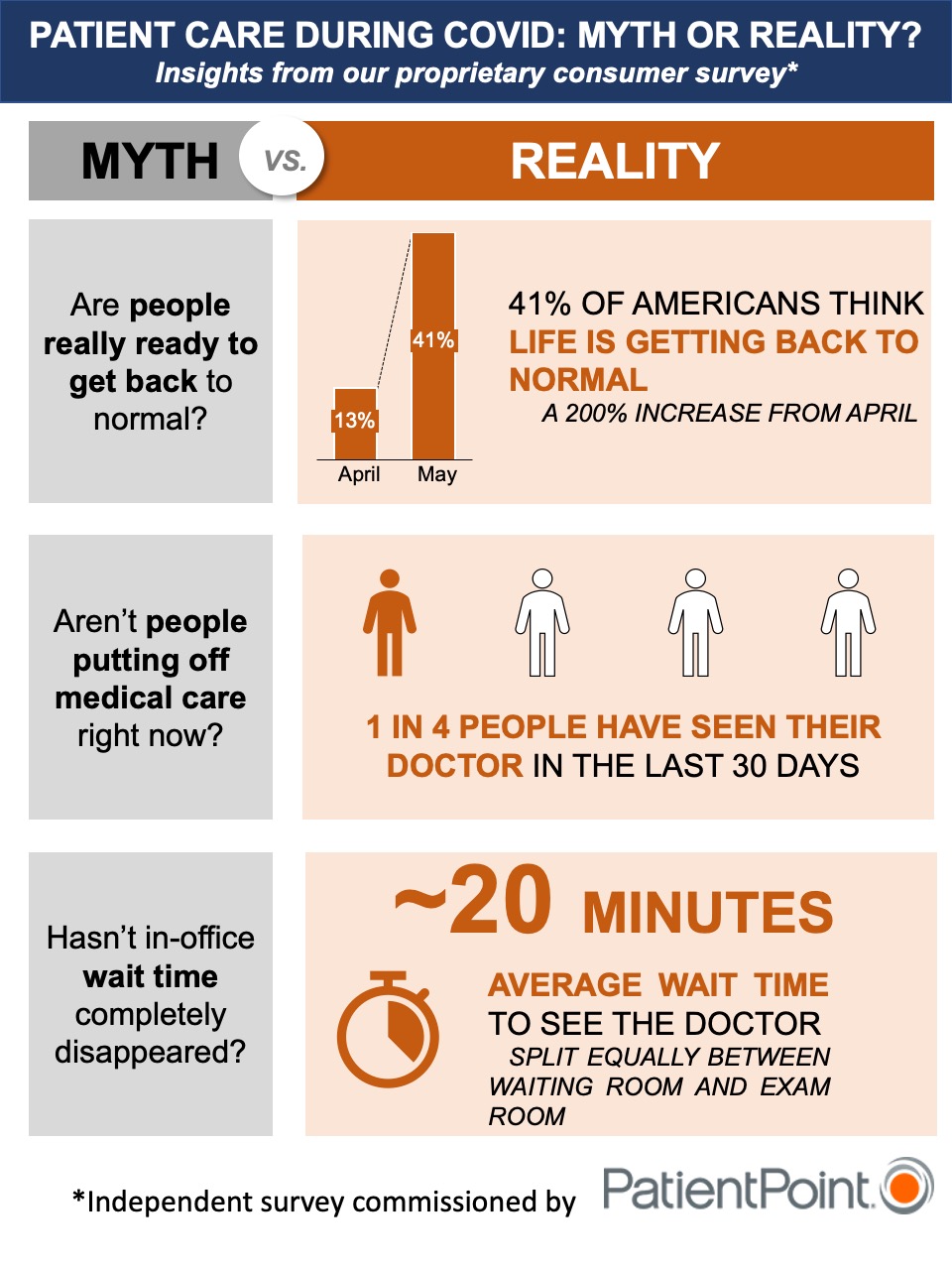Did you know that before COVID-19 became a pandemic it was declared an infodemic?
The World Health Organization defines an infodemic as “an excessive amount of information about a problem which makes it difficult to identify a solution.” Put another way, it’s information overload that can quickly turn to rumors and misinformation.
The COVID-19 “infodemic” has had a direct impact on the point-of-care industry. Within just a couple of weeks of COVID-19’s arrival, we began to see countless forecasts, studies and webinars (many of which were conflicting) about how the virus might impact physician office traffic.
Seeking clarity amid the ceaseless projections and data points, we decided to go directly to the source—doctors and patients—to gather insights about their attitudes and behaviors about COVID-19 and how the virus is affecting their delivery of and dependence on healthcare, respectively.
The independent research, commissioned by PatientPoint through L Catterton and in collaboration with the National Foundation for Infectious Diseases, is intended to provide an ongoing benchmark of real doctor and patient insights on COVID-19.
We’ll be providing analysis of the results of this independent study via a series of blog posts over the coming weeks and months.
Here are the first insights from the first wave of COVID-19 patient surveys:

As evidenced by the above, headlines aren’t always what they appear to be. Patients are moving toward a new normal and the vast majority are not overly concerned about visiting their doctor’s office. Importantly, once at their doctor’s office, patients report spending time in the waiting room.
It is only through continued analysis that we can learn more about how patients and doctors are thinking and behaving when it comes to COVID-19—and we can’t wait to apply what we learn to continue to make every doctor-patient engagement better at all points of care.

